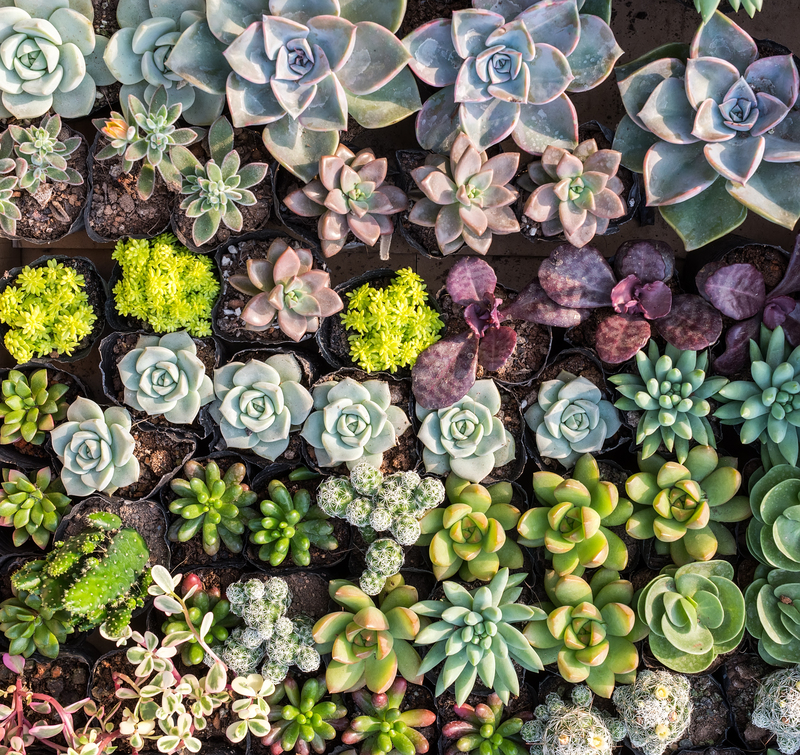Winter Gardening Made Easy and Effective
Posted on 08/06/2025
Winter Gardening Made Easy and Effective
Embracing the chilly months need not be an obstacle for your gardening ambitions. In fact, winter gardening opens up possibilities for fresh produce and vibrant blooms even as temperatures drop! This comprehensive guide on winter gardening made easy and effective will empower you to keep your yard lively all season long. Let's explore tips, crops, and strategies for success.
Why Pursue Winter Gardening?
Many assume that gardening is best left for spring and summer, but savvy gardeners know that winter gardens offer a unique set of advantages:
- Continuous harvest: Fresh greens and hardy veggies can thrive in crisp air.
- Reduced pests: Cold temperatures minimize many common pests and diseases.
- Productive soil: Winter crops protect and nourish your soil with living roots.
- Early start: Jumpstart spring with seedlings grown indoors or under protection.
- Improved mood: Gardening during shorter days boosts well-being and provides light exercise.
Transforming your outdoor space into a productive haven is achievable, even when frost bites. Let's see how you can make winter gardening easy and productive!

Essential Planning for Effective Winter Gardening
Understand Your Climate and Hardiness Zone
Before you put trowel to soil, it's critical to identify your USDA hardiness zone. This provides insight on local temperatures and frost dates, helping you select suitable crops that will thrive through winter.
Familiarize yourself with your region's characteristics:
- Know the first and last frost dates.
- Monitor average winter lows.
- Take note of microclimates within your garden (e.g., areas sheltered from wind or close to buildings).
Choosing the Right Location
Maximizing sunlight is vital in winter gardening. Most winter crops require at least 4-6 hours of sunlight, so place your beds and containers where they receive the most daily light. South-facing walls, patios, or windowsills are ideal spots for maximizing natural heat and light.
Soil Preparation for Winter Gardens
Healthy soil equals healthy plants, even in winter! Here are some tactics for making your soil winter-ready:
- Add organic matter: Compost or aged manure increases insulation and improves soil structure.
- Mulch generously: A thick layer of straw, leaves, or bark preserves moisture and protects roots from freezing.
- Check drainage: Winter rains or snow can saturate soil. Raised beds or amended ground help prevent root rot.
Top Crops for a Productive Winter Garden
Success in winter gardening made effective depends largely on crop choice. Here are robust vegetables and herbs that thrive in cooler temperatures:
Leafy Greens
- Kale: Exceptionally hardy and often sweeter after frost.
- Spinach: Fast-growing and resistant to cold weather.
- Swiss Chard: Tolerates cooler temperatures with vibrant colors.
- Mustard Greens: Zesty flavor and rapid growth.
Root Vegetables
- Carrots: Harvest through winter - flavor intensifies in frosty soil.
- Beets: Both roots and greens are edible and cold-hardy.
- Parsnips: Become sweeter after exposure to cold.
- Turnips and radishes: Quick-maturing and resilient.
Other Hardy Choices
- Onions and garlic: Plant in fall for larger bulbs by spring.
- Leeks: Unfazed by snow and extremely flavorful.
- Herbs such as parsley, thyme, and chives: Withstand light frost and are perfect for winter kitchen use.
Season Extension & Protection Techniques
Boost your results from winter gardening with these trusted protection strategies:
Utilize Cold Frames
A cold frame is a clear-topped box that creates a mini-greenhouse environment. It locks in warmth and shields plants from harsh winds, frost, and snow. Great for greens and seedlings, you can build one from old window frames or purchase ready-made models.
Row Covers & Cloches
Floating row covers made from lightweight fabric protect crops from frost and curious animals while still letting sunlight in. Cloches (mini individual greenhouses) work well for single plants or herbs.
- Install these as soon as nighttime temperatures consistently drop below freezing.
Greenhouses and Polytunnels
For winter gardening made easy and productive year after year, consider more permanent solutions:
- Polytunnels: These plastic covered tunnels retain heat and allow for even greater plant variety in cold months.
- Greenhouses: Offer full control of temperature, humidity, and light. Suitable for sensitive crops and starting seeds for spring.
Maintaining and Caring for Your Winter Garden
Water Wisely
- Don't overwater: Plants grow slowly in cold and use less water. Check soil moisture regularly--only water if it's dry one inch below the surface.
- Avoid evening watering: To minimize the risk of freezing damage, water during midday when temperatures are warmest.
Monitor for Pests and Diseases
While most pests are less active in winter, slugs, snails, and rodents may still pose challenges. Inspect plants regularly, remove debris, and harvest crops promptly to avoid attracting unwanted guests.
Feed Sparingly
Fertilize cautiously in winter. Most cold-season crops require only light feeding if at all. Over-fertilization can stress roots when growth slows. Use compost or dilute organic fertilizers as needed.
Mulch for Protection
- Replenish mulch: Reapply organic mulch to insulate soil and keep roots warm during deep freezes.
- Cover empty beds: If you aren't planting anything, cover soil with mulch or a cover crop to prevent erosion and enrich the soil for spring.
Indoor Winter Gardening Ideas
You don't need a dedicated greenhouse for winter gardening made easy and effective. Even a sunny windowsill or countertop can yield fresh produce. Try these techniques for indoor winter gardening:
- Grow microgreens and sprouts: Fast, nutrient-packed, and can be harvested within days.
- Cultivate herbs in pots: Basil, mint, and oregano flourish indoors when provided with ample light.
- Container gardening: Lettuce and radishes thrive in small indoor planters.
Supplement light with fluorescent or LED grow lights for the best indoor gardening results.
Easy Tricks for a Beautiful Winter Landscape
Winter gardening isn't limited to vegetables! Colorful landscapes add beauty to bleaker months. Consider these options:
- Ornamental cabbages and kales: Showy foliage with purples and greens brightens winter beds.
- Hellebores and snowdrops: Early bloomers that thrive in cold.
- Evergreen shrubs: Boxwood, holly, and juniper provide structure and color year-round.
- Berries: Plants like winterberry and viburnum offer stunning winter interest and food for wildlife.
Common Winter Gardening Mistakes to Avoid
- Planting too late: Many winter crops need to be sown mid to late summer or early fall to mature before hard freezes.
- Neglecting protection: Uncovered plants may suffer from wind, snow, or ice damage.
- Overwatering or underwatering: Both extremes cause stress--check moisture often.
- Ignoring sunlight requirements: Shorter days require careful site selection for maximum exposure.
- Not rotating crops: Always practice crop rotation to avoid soil-borne diseases.

Winter Gardening FAQ
Can you really grow food outdoors during winter?
Absolutely! Cold-hardy vegetables and certain herbs thrive with basic season extension techniques, especially in milder climates.
What is the easiest winter vegetable to grow?
Kale is universally praised for its ease and resilience, making winter gardening easy for all skill levels.
How can I garden year-round?
Combine outdoor beds with protected spaces such as cold frames, greenhouses, and indoor container gardening for four-season harvests.
Conclusion: Embrace the Cold with Effective Winter Gardening
There's no need for your gardening passion to hibernate through the winter! With proper planning, hardy crop selections, and some simple protective measures, winter gardening made easy and effective is within everyone's reach.
Imagine stepping outside on a crisp winter morning, harvesting your own fresh greens, or admiring your vibrant landscape while neighbors' gardens lay dormant. All it takes is a bit of preparation--and the willingness to try something new!
Start planning your winter garden today and experience the rewards of year-round growing. Happy gardening!
Summary Checklist for Successful Winter Gardening
- Know your hardiness zone and frost dates.
- Choose sunniest locations and enrich your soil.
- Grow cold-hardy crops: greens, roots, onions, and herbs.
- Use mulches, cold frames, row covers, or greenhouses for extra protection.
- Water wisely and watch for pests even in winter.
- Don't forget to add beauty with winter-blooming ornamentals!
If you follow these time-tested tips, your winter garden will be both easy and highly productive year after year.

